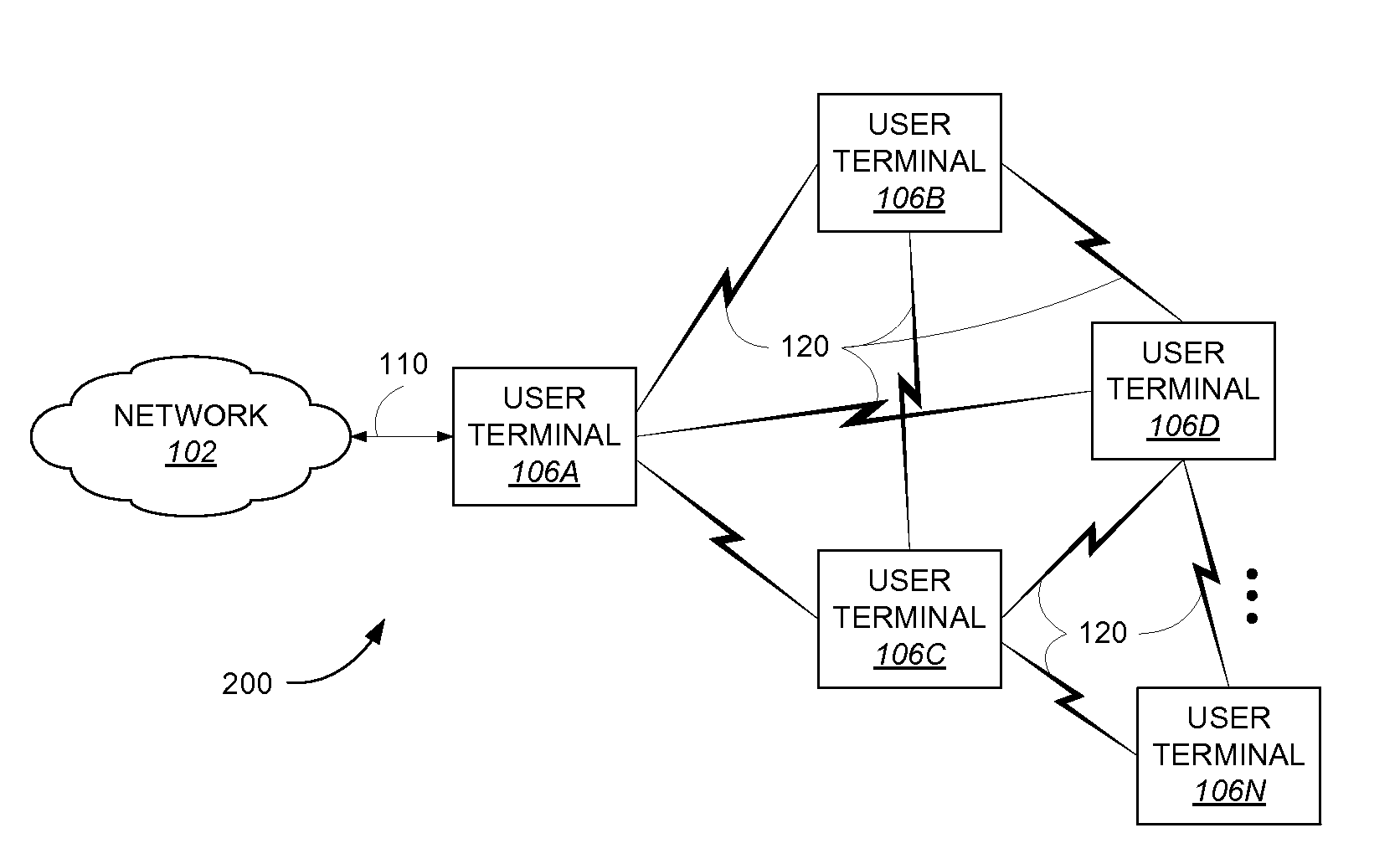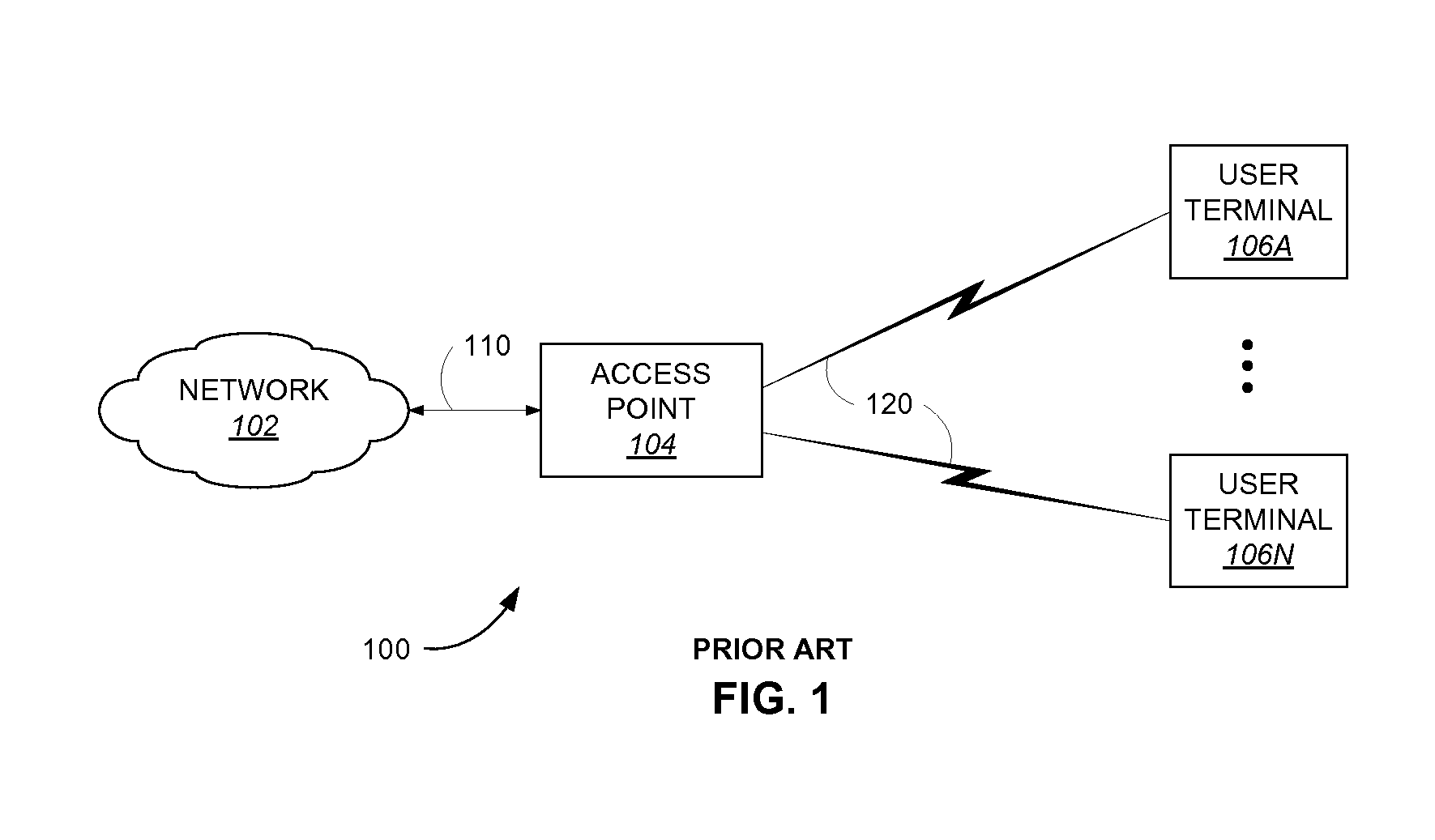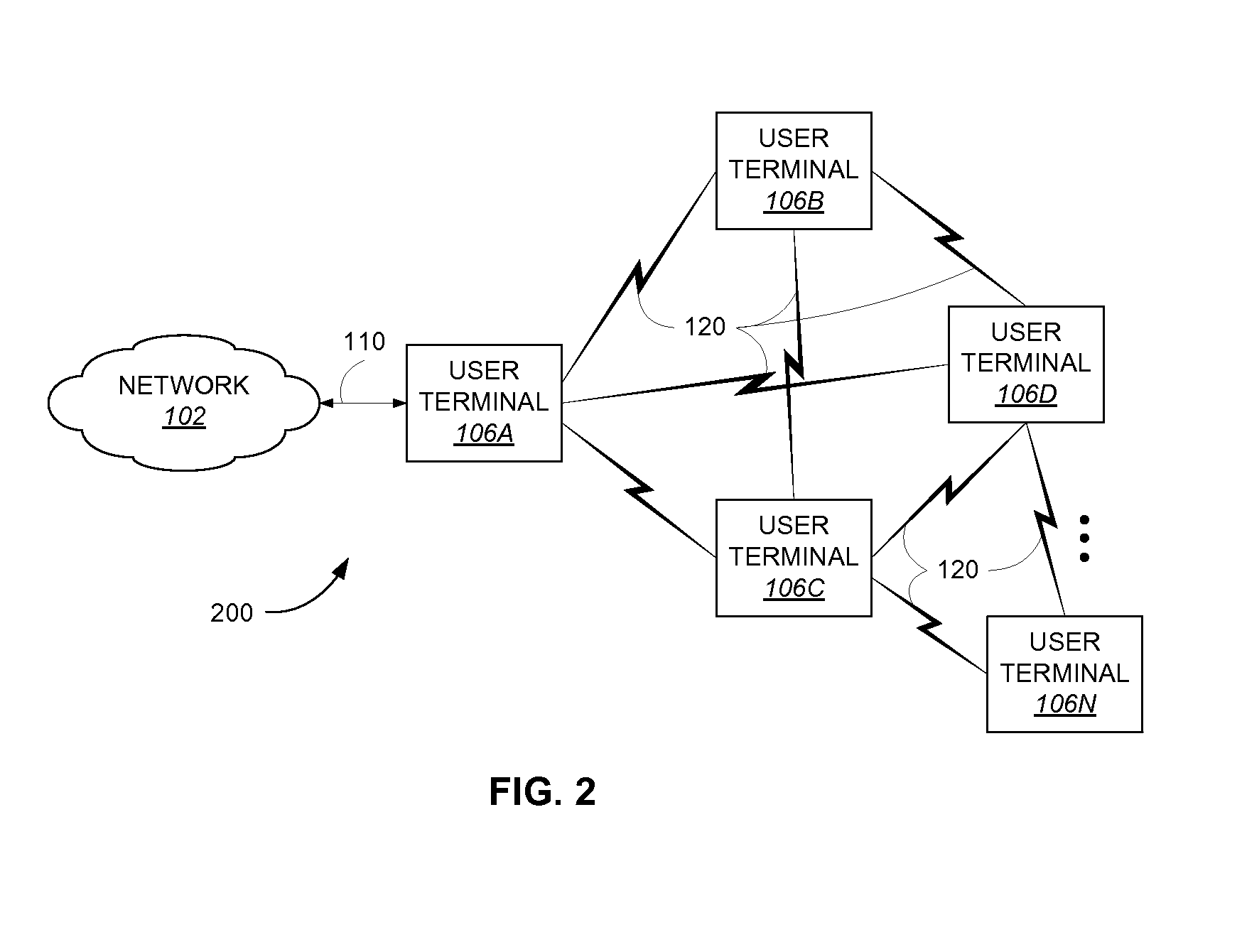Method and apparatus for an ad-hoc wireless communications system
a wireless communication and wireless communication technology, applied in the field of communication, can solve problems such as system failure to operate efficiently and system capacity reduction
- Summary
- Abstract
- Description
- Claims
- Application Information
AI Technical Summary
Benefits of technology
Problems solved by technology
Method used
Image
Examples
Embodiment Construction
[0047]An ad hoc network of 802.11 wireless LAN stations (STA) with no centralized controller is known as an Independent Basic Service Set (IBSS). Until now, Quality of Service (QoS) facilities have not been available in an IBSS. An IBSS that allows token passing for round-robin (RR) service of QoS flows is referred to herein as an RRBSS. The RRBSS is an enhancement of the IBSS that permits low-latency, reduced contention, distributed scheduling useful in any ad hoc network, but particularly suitable for high data rates. Distributed low-latency scheduled access is provided for QoS flows through a round-robin (RR) token passing service discipline. RR STAs follow a round-robin order and are able to communicate with round-robin transmit opportunities (RR TXOPs) during a portion of the beacon interval known as the RR period or RRP. In one embodiment, only STAs with QoS flows are permitted to join the RR schedule and access the medium during the RRP. Best effort flows continue to access t...
PUM
 Login to View More
Login to View More Abstract
Description
Claims
Application Information
 Login to View More
Login to View More - R&D
- Intellectual Property
- Life Sciences
- Materials
- Tech Scout
- Unparalleled Data Quality
- Higher Quality Content
- 60% Fewer Hallucinations
Browse by: Latest US Patents, China's latest patents, Technical Efficacy Thesaurus, Application Domain, Technology Topic, Popular Technical Reports.
© 2025 PatSnap. All rights reserved.Legal|Privacy policy|Modern Slavery Act Transparency Statement|Sitemap|About US| Contact US: help@patsnap.com



